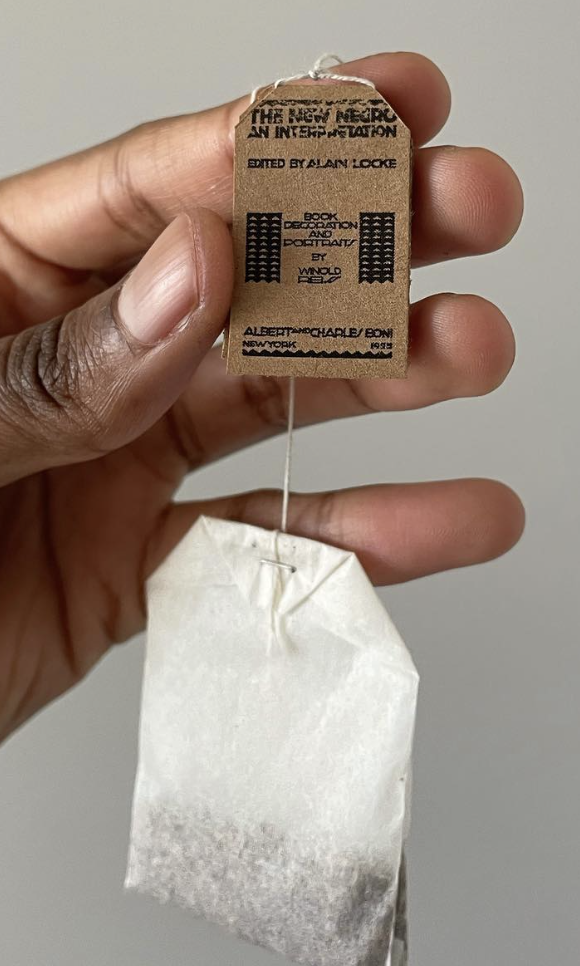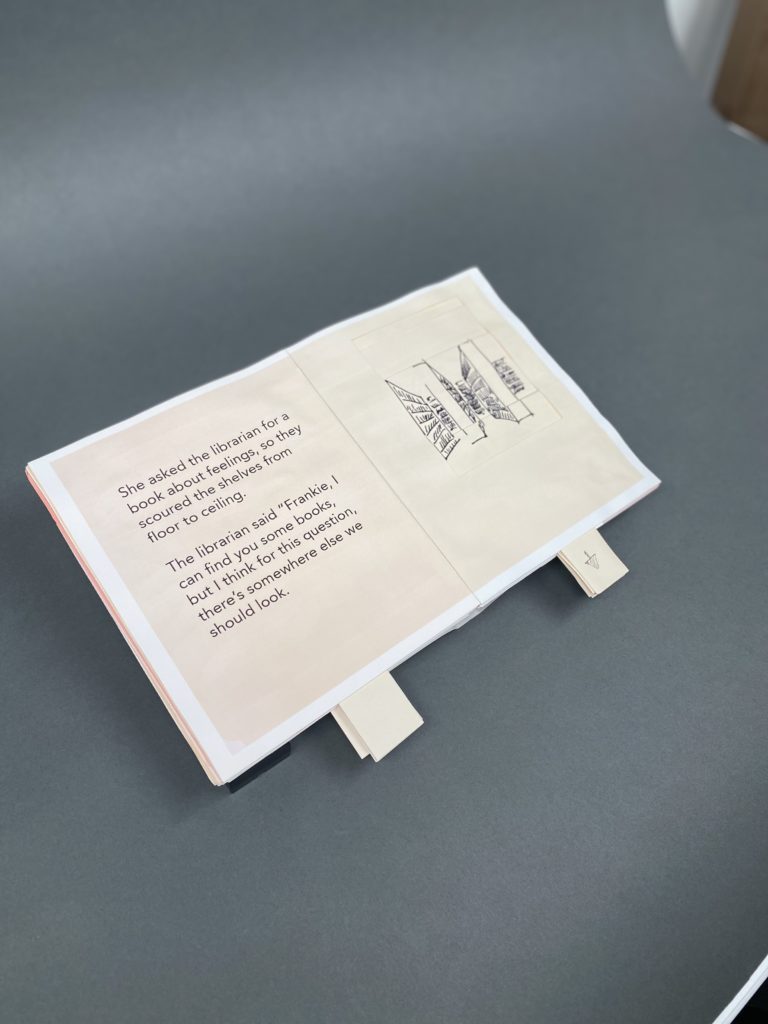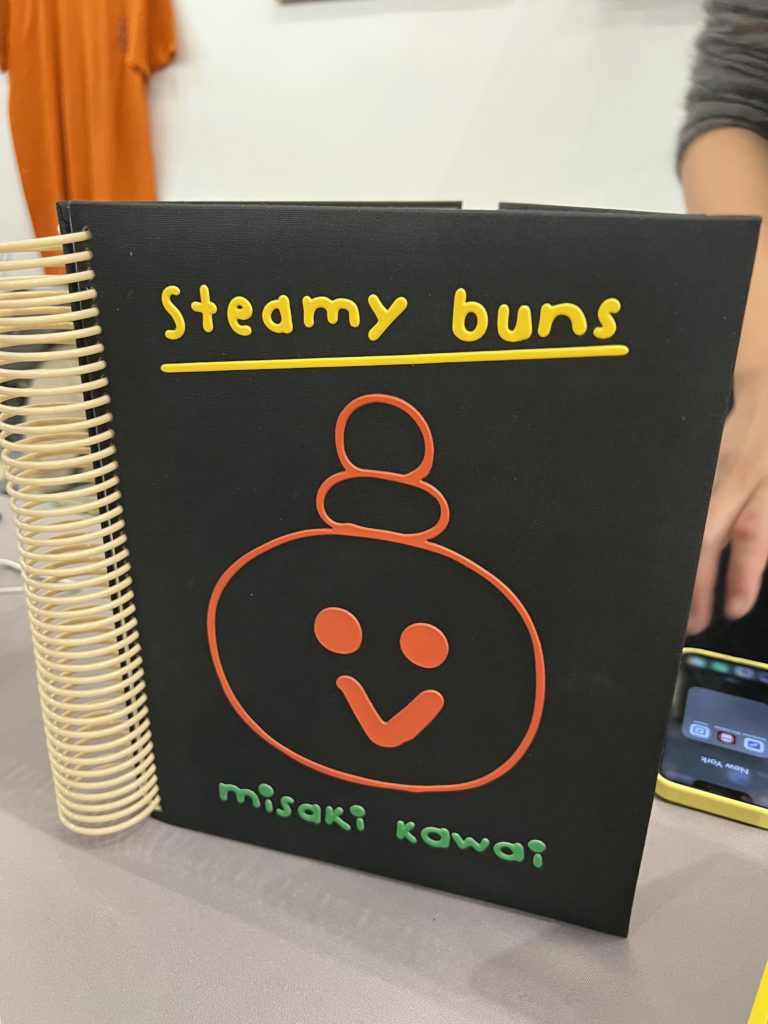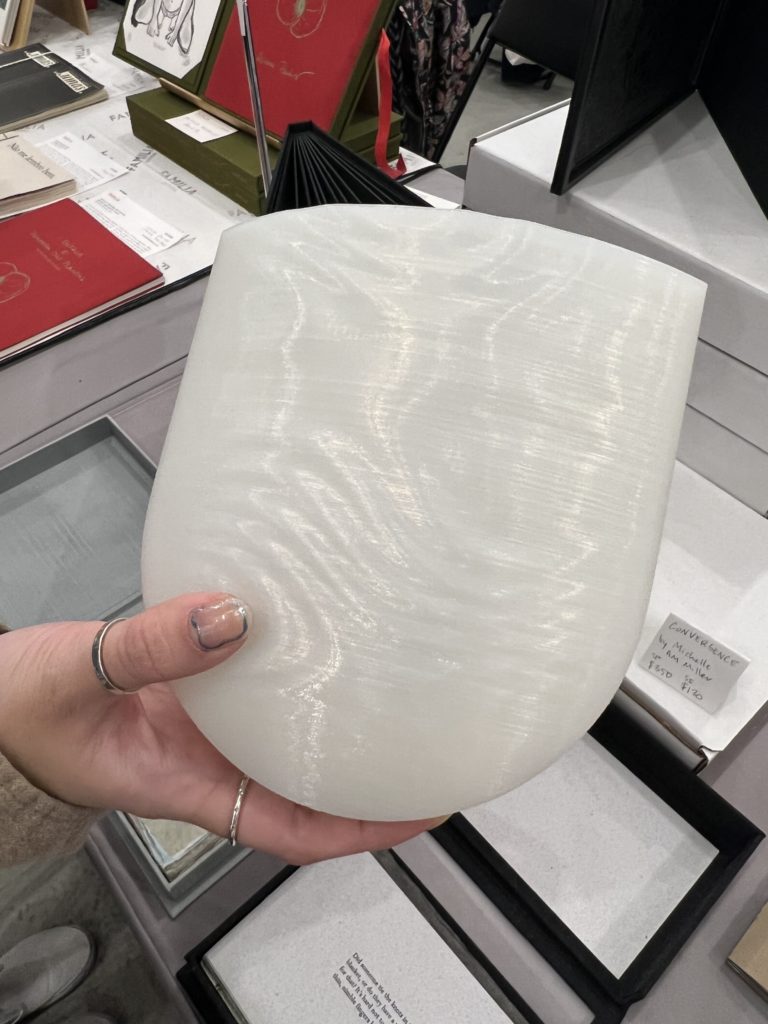In thinking about experimental zines, my first love was Neta’s teabag zine. I loved the delight and surprise brought by having something unexpected, and creating a new experience, particularly when a participant might already be sitting down to have a break and moment of rest drinking their cup of tea. This was my first light bulb moment that a zine could really live anywhere.

I was also inspired by paper engineering and paper art forms, especially after taking a paper engineering class last year. Using paper as a physical storytelling device was inspiring to me, and it felt important for me to elevate the use of paper beyond just printing content on it. For one of my paper engineering assignments last year I made a children’s book using a dissolve technique that was developed in the 1800s and is one of the earliest forms of animation. I loved the way that in the paper form also served as a metaphor for the story I was trying to tell. Revealing things, creating surprise.


With these inspirations in mind, Megha and I began our ideation. We were both really passionate about creating something physical and sculptural beyond just the traditional printed story. We also wanted to readers to be able to experience a non-linear story. Disrupting the traditional narrative form felt like a way to capture the reader’s attention. In gestalt theory, there is a concept that people really only remember the beginning and the end and maybe one significant moment in the middle. We really wanted to displace that and by providing the reader with some agency, we hoped that they would craft a story themselves in their own way.
A few other pieces of inspiration came from the Art Book fair. The first was the book Steamy buns by Mistake Kawai. The book was bound with two large spirals. Fabricating the book with two spiral bindings allowed the reader to determine the order of the book themselves and experience it completely in their own way.

The other project I loved was Convergence by Michelle AM Miller. The fabrication was what really caught my eye. The book is a curved hard copy book that comes with its own 3D printed slip case. I loved the idea of creating housing for printed works. This made the piece feel special and completely flips the script on how to store or display books in spaces. We think so often about books as living on book shelves or coffee tables, but turning this into a sculptural piece felt like the piece gained permission to be displayed anywhere and became really significant.
